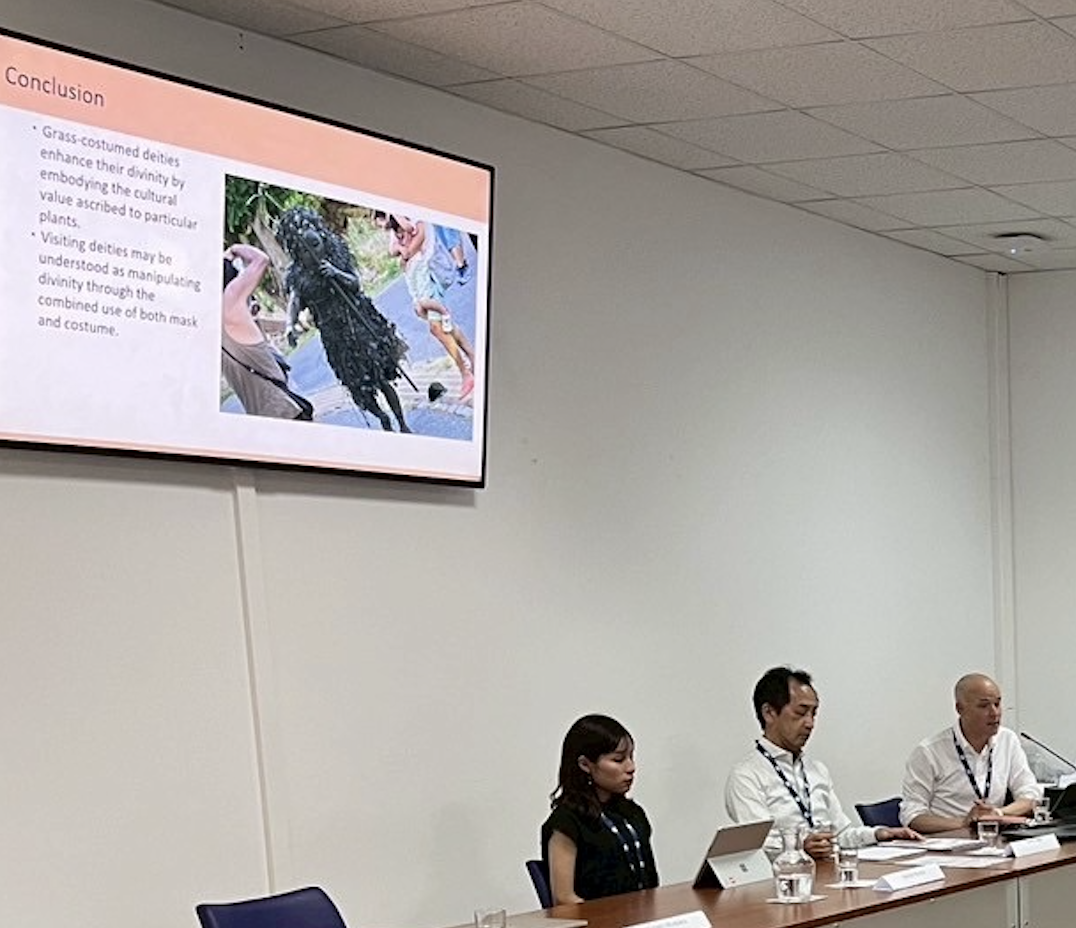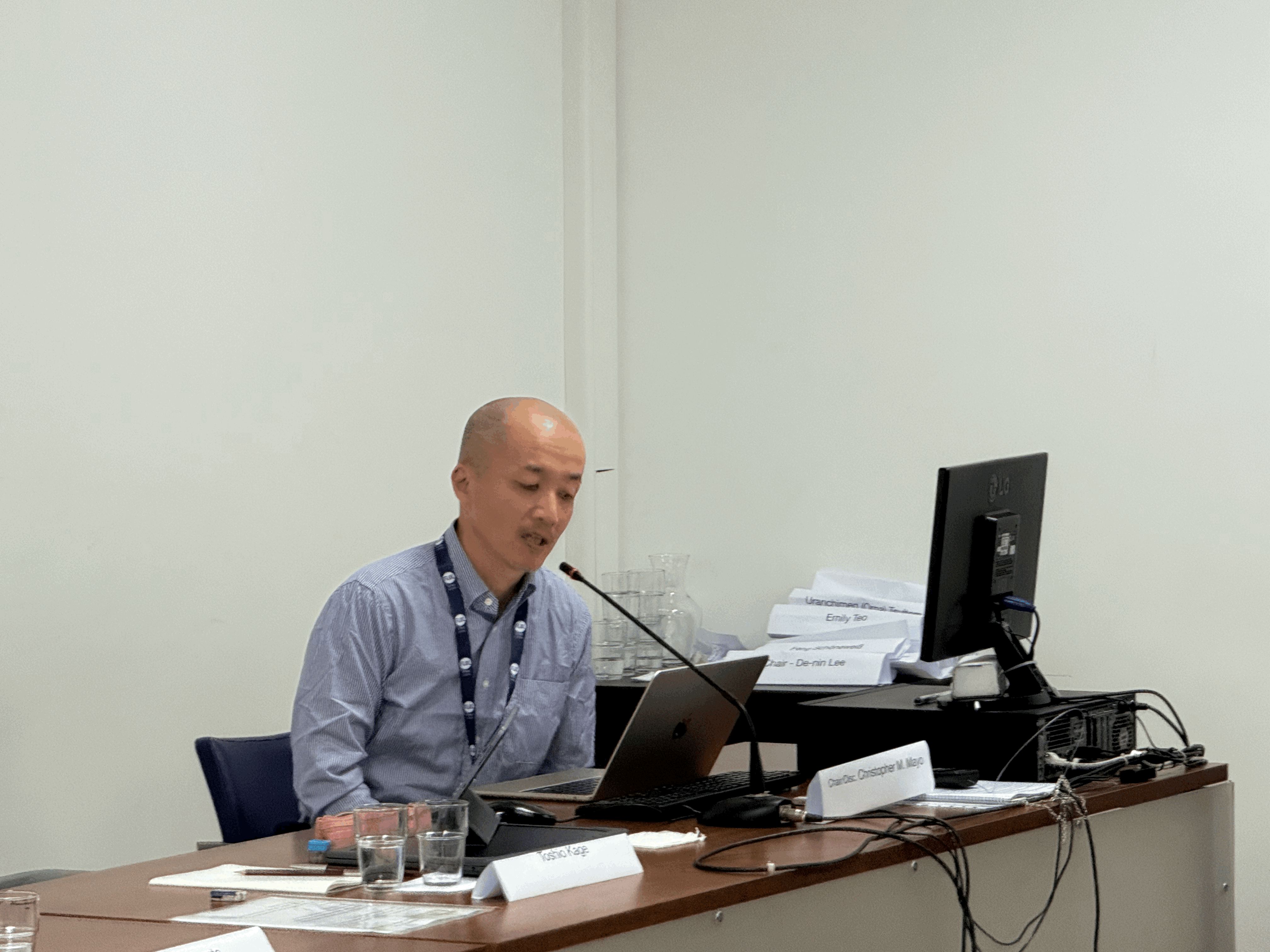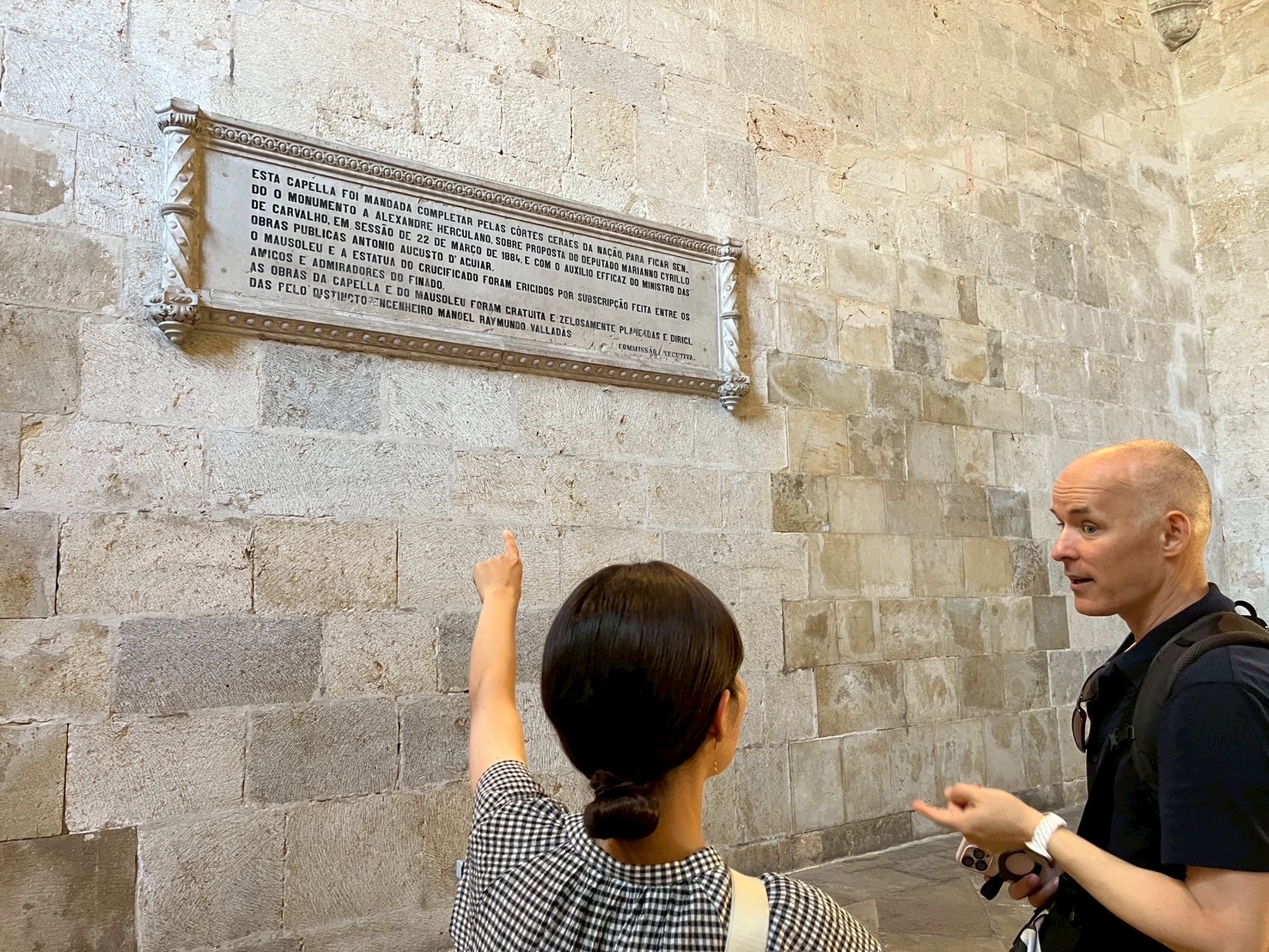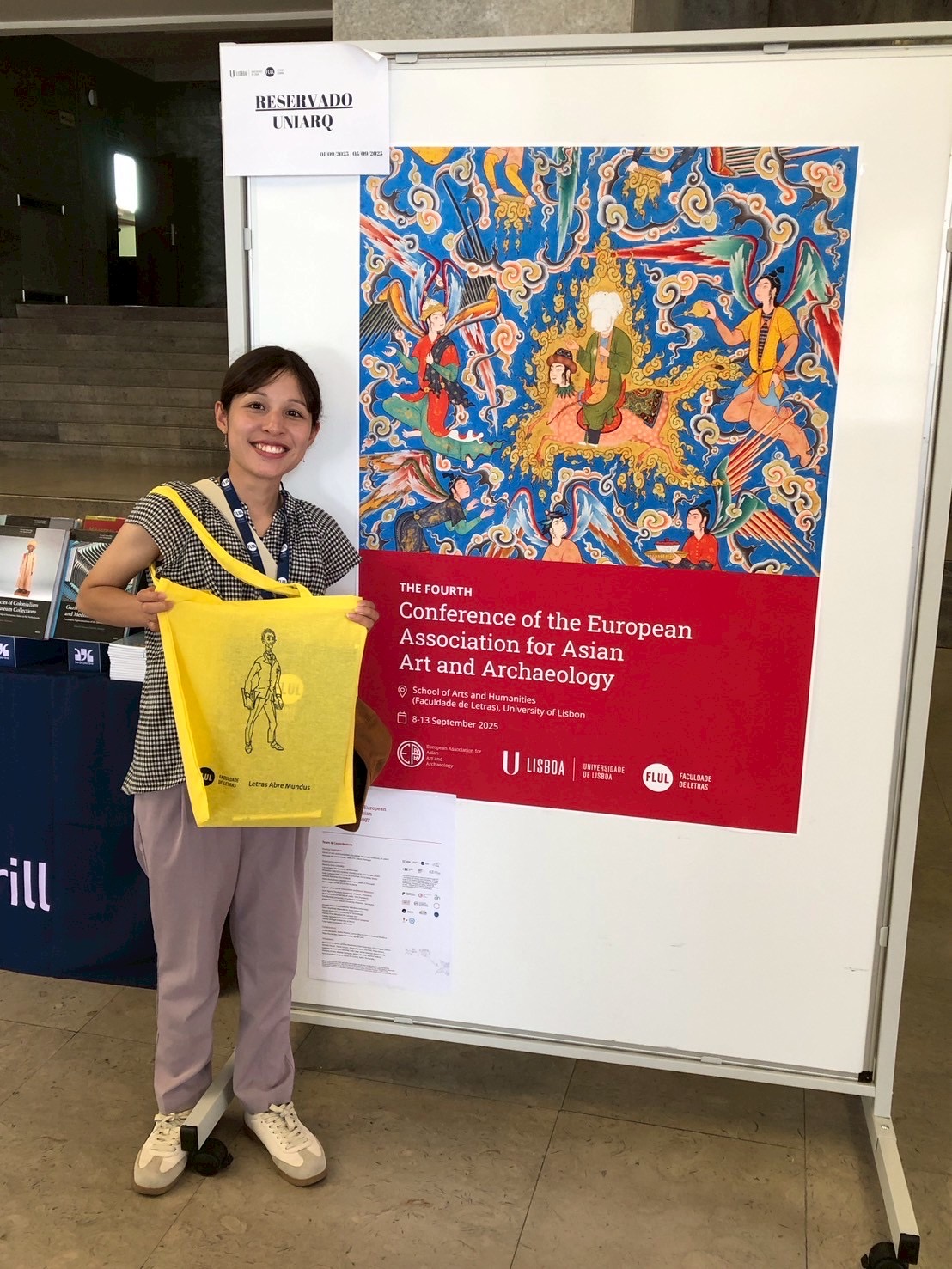【国際文化学部】OGによる欧州アジア美術・考古学協会第4回大会(リスボン)での発表および欧州調査

【英語は日本語の後に続きます。English follows the Japanese.】
2025年9月10日(水)に、国際文化学部の鹿毛教授・メイヨー教授・宮坂准教授と、本学国際文化学部の卒業生・村田奈美恵さんが、ポルトガル・リスボンで開催された European Association for Asian Art and Archaeology(EAAA)第4回大会 に登壇しました。
パネル題目は “Transformations in Religious Expression: Place, Faith, and Material Cultures in Japan”(宗教表現の変容――日本における場所・信仰・物質文化) です。
村田さん(現在はキリスト聖書神学校に在籍)は、“From Exile to Beatification: The Cultural and Religious Commemoration of Takayama Ukon” と題した発表において、記念碑・文献・美術作品を手がかりに、高山右近像の受容が「江戸の武勇/茶」から「現代の謙抑的な祈り」へ移行していく過程を明快に示しました。
2025年9月10日(水)に、国際文化学部の鹿毛教授・メイヨー教授・宮坂准教授と、本学国際文化学部の卒業生・村田奈美恵さんが、ポルトガル・リスボンで開催された European Association for Asian Art and Archaeology(EAAA)第4回大会 に登壇しました。
パネル題目は “Transformations in Religious Expression: Place, Faith, and Material Cultures in Japan”(宗教表現の変容――日本における場所・信仰・物質文化) です。
村田さん(現在はキリスト聖書神学校に在籍)は、“From Exile to Beatification: The Cultural and Religious Commemoration of Takayama Ukon” と題した発表において、記念碑・文献・美術作品を手がかりに、高山右近像の受容が「江戸の武勇/茶」から「現代の謙抑的な祈り」へ移行していく過程を明快に示しました。

また、一行は9月7日(日)から15日(月)にかけて、巡礼路調査、日本ゆかりの美術、日本と欧州の前近代交流に関する現地研究を実施。最終日には、16世紀に天正遣欧少年使節の伊東マンショがオルガン演奏で欧州の人々を感銘させたと伝えられる、ポルトガル・エヴォラ(Évora)大聖堂を訪問し、現在も展示されている当時のオルガンを見学しました。

天正遣欧少年使節は、キリシタン大名の名代として若き4名の少年が欧州を訪れた、国際関係史上きわめて重要な出来事です。今年開催された大阪・関西万博のイタリア館には、「Portrait of Itō Mancio(伊東マンショの肖像)」が展示されていました。
Presentation at the 4th Conference of the European Association for Asian Art and Archaeology (Lisbon) and Research in Europe
On September 10, Professor Kage, Professor Mayo, and Associate Professor Miyasaka of the Intercultural Studies Department, together with Ms. Namie Murata, an alumna of the Intercultural Studies Department, presented in a panel at the 4th Conference of the European Association for Asian Art and Archaeology (EAAA) held in Lisbon, Portugal. Their panel was entitled “Transformations in Religious Expression: Place, Faith, and Material Cultures in Japan.”
Ms. Murata (currently enrolled at Christ Bible Seminary in Nagoya) gave a presentation titled “From Exile to Beatification: The Cultural and Religious Commemoration of Takayama Ukon.” Drawing on monuments, literature, and artwork, she clearly illustrated how images of Takayama Ukon have been received over time, shifting from “Edo-period valor and tea culture” to “a modern image of humble prayer.”
From September 7 to 15, the group also carried out on-site research focusing on pilgrimage routes, Japanese-related artwork, and early modern cultural exchanges between Japan and Europe. On the final day, they visited Évora Cathedral in Portugal, where, according to tradition, the Tenshō Embassy member Itō Mancio impressed European audiences with his organ performance in the 16th century. They were able to view the very organ, still on display today, that was said to have been played at that time.
The Tenshō Embassy, in which four young boys traveled to Europe as representatives of Christian domainal lords, was a highly significant event in the history of international relations. A portrait of Itō Mancio was exhibited at the Italian Pavilion at Expo 2025 Osaka, Kansai.
On September 10, Professor Kage, Professor Mayo, and Associate Professor Miyasaka of the Intercultural Studies Department, together with Ms. Namie Murata, an alumna of the Intercultural Studies Department, presented in a panel at the 4th Conference of the European Association for Asian Art and Archaeology (EAAA) held in Lisbon, Portugal. Their panel was entitled “Transformations in Religious Expression: Place, Faith, and Material Cultures in Japan.”
Ms. Murata (currently enrolled at Christ Bible Seminary in Nagoya) gave a presentation titled “From Exile to Beatification: The Cultural and Religious Commemoration of Takayama Ukon.” Drawing on monuments, literature, and artwork, she clearly illustrated how images of Takayama Ukon have been received over time, shifting from “Edo-period valor and tea culture” to “a modern image of humble prayer.”
From September 7 to 15, the group also carried out on-site research focusing on pilgrimage routes, Japanese-related artwork, and early modern cultural exchanges between Japan and Europe. On the final day, they visited Évora Cathedral in Portugal, where, according to tradition, the Tenshō Embassy member Itō Mancio impressed European audiences with his organ performance in the 16th century. They were able to view the very organ, still on display today, that was said to have been played at that time.
The Tenshō Embassy, in which four young boys traveled to Europe as representatives of Christian domainal lords, was a highly significant event in the history of international relations. A portrait of Itō Mancio was exhibited at the Italian Pavilion at Expo 2025 Osaka, Kansai.




